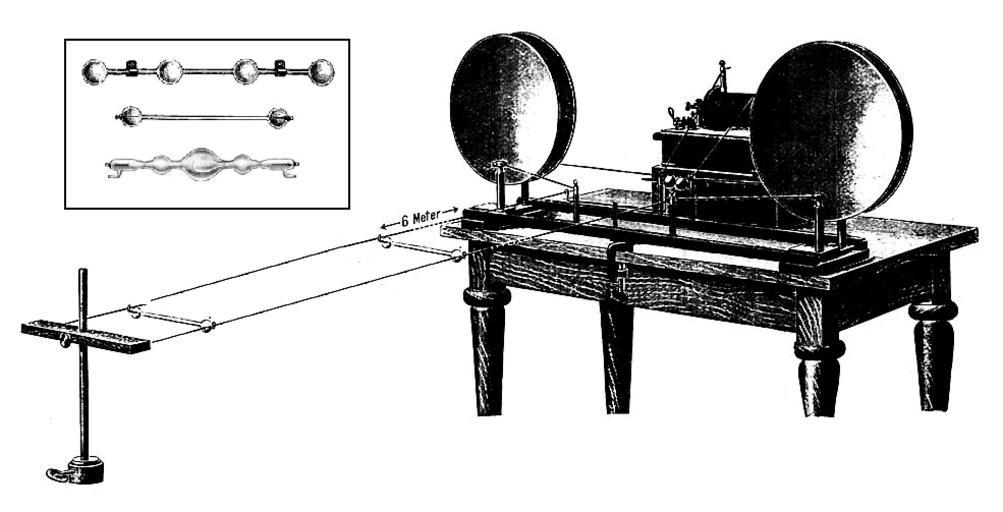MAKE A MEME
View Large Image

| View Original: | Early_Lecher_line.png (985x503) | |||
| Download: | Original | Medium | Small | Thumb |
| Courtesy of: | commons.wikimedia.org | More Like This | ||
| Keywords: Early Lecher line.png Drawing of an early demonstration Lecher line apparatus from a 1902 catalog of scientific equipment It is very similar to the first Lecher line built by Austrian physicist Ernst Lecher in 1888 A Lecher line is a pair of parallel wires or rods that were used to measure the wavelength of radio waves In this example the radio waves are generated by the Hertzian spark-gap oacillator right and sent down the Lecher line the pair of parallel wires to the left The Lecher line forms a length of balanced transmission line along which the waves travel at the speed of light At the left end of the line the two wires are connected together This short-circuit termination reflects the waves back up the line toward the transmitter The outgoing and reflected waves interfere with each other creating a series of standing waves on the line The voltage across the line goes to zero at nodes that occur at regular intervals of one-half wavelength λ/2 from the end of the line The distance between two nodes is measured and multiplied by two to get the wavelength λ Since the waves travel at the speed of light c the frequency of the waves f can be calculated <math>f c / \lambda</math> To find the location of the nodes a Geissler tube similar to a small neon light is suspended from hooks across the line and slid up and down the line The high voltage waves cause it to glow At the nodes the voltage goes to zero so the Geissler tube goes out The inset top left shows the type of Geissler tubes that were used with Lecher lines The Hertzian oscillator right generated radio waves in the UHF range with wavelengths of a few meters so a 6 meter Lecher line was used the length is truncated in this drawing The oscillator consists of an induction coil that generates a high voltage that jumps across a spark gap center many times per second The two sides of the spark gap are coupled to the Lecher line through two parallel-plate capacitors circles The energy stored in the capacitors is discharged into the line during each spark generating a brief oscillating radio wave damped wave that decays to zero The symmetrical balanced circuit ensures that equal and opposite voltage waves are induced in each wire Alterations to image extended the length of the Lecher line which was misleadingly shortened to several inches long in the original drawing to save space Added inset showing closeup of Geissler tubes from nearby drawing in same source Downloaded 2010-11-16 from http //www sil si edu/digitalcollections/trade-literature/scientific-instruments/files/51667/imagepages/image316 htm Physikalische Apparate Preisliste No 18 1904 Ferdinand Ernecke Berlin Germany p 304 fig 8800 in http //www sil si edu/digitalcollections/trade-literature/scientific-instruments/index htm Instruments for Science collection Smithsonian Institution 1904 author Public domain - it was published at least 106 years ago PD-Art Spark-gap transmitters Lecher lines | ||||